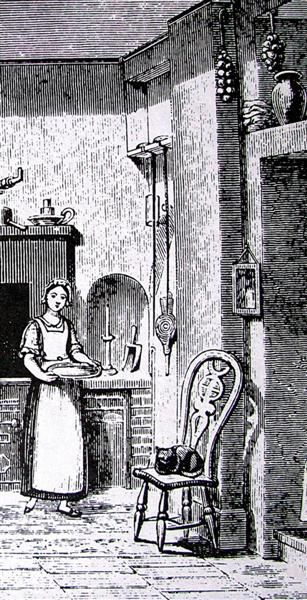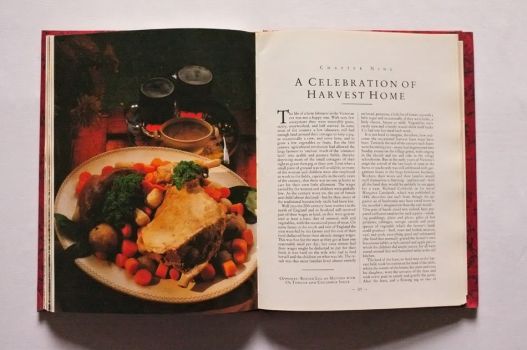The Victorian Cookbook
£12.95
Michelle Berriedale-Johnson’s book presents more than a hundred traditional recipes suitable for family meals or more elaborate dinners. Divided into 12 chapters, each presenting a mouth-watering menu based on a historical event or occasion, the book is packed with social and culinary details. It is beautifully presented with specially commissioned colour photographs and contemporary black-and-white illustrations.
Dispatched next day with Royal Mail 2nd Class
- RRP: £12.95
- Format: 260 mm x 195 mm (10 ¼ x 7 2/3 in)
- Pages: 160
- Weight: 0.9 kg (2 lb)
- Pictures: 100 b/w and 40 colour
- Binding: Hardback
- ISBN: 978 0 7063 6787 4
- Publication: 1989
This gastronomic journey through the Victorian era takes us from the homely fare of Eliza Acton and Isabella Beeton to the mouth-watering meringue showpieces of the masters of haute cuisine, such as Alexis Soyer of the Reform Club and Charles Francatelli, chef to the young Queen Victoria. The journey starts in England and takes in the colonial outposts of Australia and imperial India as well as the Boston School of Fannie Farmer. The 120 recipes are chosen and adapted to suit modern taste, and are enhanced by fascinating insights into the Victorian age. At intervals throughout the text boxed asides feature topics such as life below stairs in a great house, table manners, home preserving, the introduction of imported foodstuffs and processed foods, cooking by gas, Victorian kitchen equipment, the pantry and styles of decoration and presentation. The recipes are illustrated with expertly photographed dishes, displaying the meticulous attention and carefully chosen ingredients that gave Victorian gastronomy its special quality and laid the foundations of modern cooking.
Introduction
CHAPTER 1: A WINTER BANQUET WITH CHARLES FRANCATELLI
Victorian Servants
CHAPTER 2: DINNER WITH THE REDOUBTABLE DR KITCHINER
Dining-Rooms and their Furnishings
CHAPTER 3: A DINNER AT THE REFORM CLUB WITH ALEXIS SOYER
Canning and Preserving
CHAPTER 4: MISS ELIZA ACTON’S ‘MODERN DINNER FOR A PRIVATE FAMILY’
Mass Adulteration of Foodstuffs
CHAPTER 5: MRS BEETON’S ‘HOUSEHOLD MANAGEMENT’
Victorian Kitchens and Batterie de Cuisine
CHAPTER 6: A BOSTON DINNER WITH FANNIE FARMER
Beverages
CHAPTER 7: A DINNER AT MR KETTNER’S SOHO RESTAURANT
Eating Out
CHAPTER 8: CHRISTMAS DINNER IN THE SERVANTS’ HALL
Entertaining on the Grand Scale at Alnwick Castle
CHAPTER 9: A CELEBRATION OF HARVEST HOME
Farming and Kitchen Gardens
CHAPTER 10: FOOD FROM THE STREET STALLS OF LONDON
Shops and Markets
CHAPTER 11: EDWARD ABBOTT, AUSTRALIAN ARISTOLOGIST
Stocks and Sauces
CHAPTER 12: A DINNER IN IMPERIAL INDIA
Bibliography
Index

Michelle Berriedale-Johnson is the author of numerous cookery books, including Olde English Recipes, Pepys at Table and The British Museum Cookbook. She acts as a historical consultant to the English Tourist Board and to various film and television companies, and also gives regular lectures and demonstrations for cookery schools and historical groups all over Great Britain and the United States.
Michael Boys has photographed the cuisine of the world’s most famous chefs. His work has appeared in leading magazines in Great Britain, Europe and the United States. The photographs for this book were taken at Chilston Park, Lenham, Kent and Stanhill Court Hotel, Charlwood, Surrey.

INTRODUCTION
As for Victorian women, fictional ladies may have simpered and had frequent recourse to the smelling salts, but real life ladies could be eminently practical. Isabella Beeton sat up till midnight in her husband’s office editing her magazine; Florence Nightingale rode with Soyer round the battlefields of Sebastopol planning their new hospital kitchens, and Eliza Acton campaigned vigorously to improve the quality of food as an essential element of good health.
As a result Victorian cooking is not nearly as complex as one might imagine. Of course, there are some long, involved and labour-intensive recipes, especially from the great chefs who had endless resources of both food and manpower. But many of the dishes to be found, for example, in the works of Mrs Beeton, Eliza Acton, Dr Kitchiner or Fannie Farmer are surprisingly simple, relying on long slow cooking to achieve their really excellent flavour.
FARMING AND KITCHEN GARDENS
On a typical farm the diet often did not extend much beyond cabbages, beans and potatoes, to accompany the regular joints of bacon, beef and occasionally mutton; apples, pears and soft fruit in season and some herbs for flavour and medicinal use. Of course the farmer’s wife had also to make her own butter and cheese, look after her poultry, and bake her bread, apart from preserving her fruits, cleaning her house, making and mending most of her family’s clothes and, frequently, teaching her children, so she hardly had much time left to devote to raising exotic blooms.
In the gardens of the great estates, however, not only were all the standard fruits and vegetables grown for the use of the family, but fig, vines and melon houses were also built. Peach, plum and nectarine trees lined the protected walls of kitchen gardens, and orchids and tropical lilies were raised in heated and carefully ventilated greenhouses. Sometimes as many as fifty gardeners were employed on these estates and they produced a range of fruit and vegetables scarcely equalled until the arrival of refrigerated air-freight.













